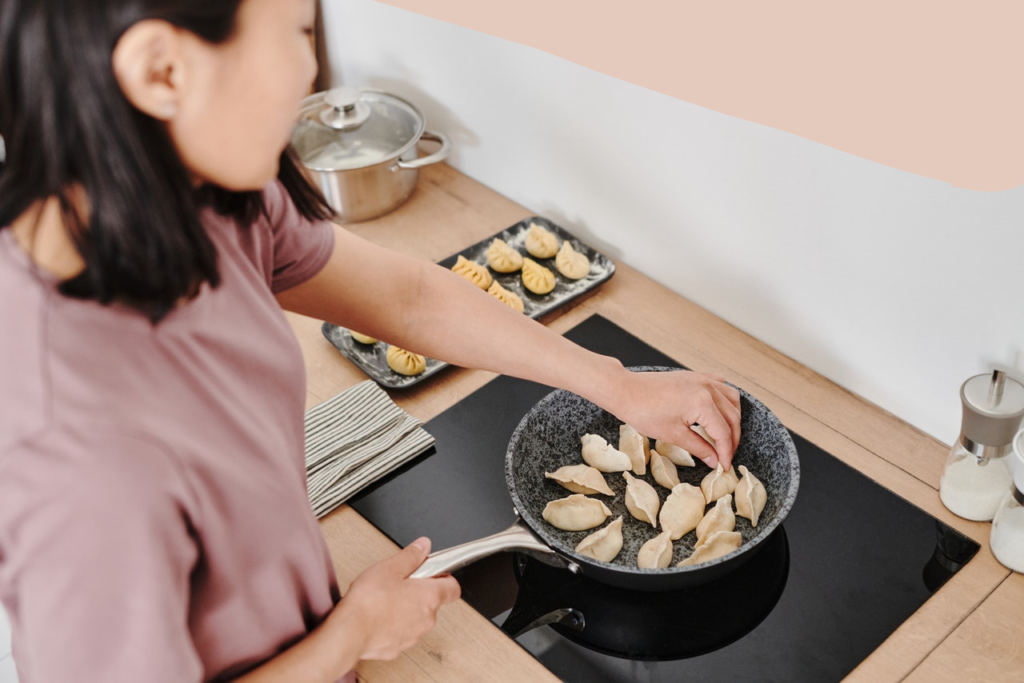As anyone who’s been bombarded with Thomas Straker’s butter rochers or Mob’s daily nduja recipes will attest, food is big business on social media.
If you’re keen to take a bite out of this ever growing market, then you’ll also know that carving out a distinct identity is crucial to establishing your presence.
It’s not just about slapping your ingredients down on a chopping board with a particular rhythm anymore; your unique cooking style and the language you use around your food (see What Willy and his ‘’pepper noir, pepper blanc, pepper rouge’’ bit) become your brand’s ‘flavour’, and the thing that sets you apart from the crowd.
As an amateur chef, healthy eating coach or UK farming advocate, you might have a particular interest or expertise, such as vegan cuisine, gluten-free baking, fitness meal prepping, or farm-to-table cooking, and it’s this niche you have to exploit.
In the world of social media, everything begins with you. You are the brand, but you have to build on that foundation and prepare yourself for the responsibilities of consistent content creation and community curation. There are software tips to help you get started on the right foot and cook up a storm online. Once you have a following, you can start to turn likes and shares into money in your bank account.
Content For Starters
Creating engaging content that resonates with your audience is the bread and butter of any successful social media influencer. As a culinary influencer, your content must be both appetising and informative, serving as a digital feast for your followers.
Firstly, focus on your visuals. High-quality images and videos are essential. Showcase your dishes in the best light, experiment with different angles, and don’t forget about the aesthetics of your surroundings. Use editing tools to enhance your visuals, but keep it natural to maintain authenticity.
Secondly, your content should tell a story. Whether it’s the origin of a recipe, your experience preparing it, or the health benefits it offers, every dish has a tale to tell. Engage your followers with storytelling to evoke emotion and connection. Offering valuable information such as detailed recipes, cooking tips, nutritional facts, or meal planning guides can add an educational aspect to your content, making it more valuable to your followers.
Lastly, engage with your audience. Encourage them to try your recipes and share their experiences. Respond to comments and questions to build a sense of community. Remember, appetising content not only attracts followers but also entices them to stay.

Consumer Engagement Is The Main Course
As a social media influencer, building an engaged following is as much about creating relationships as it is about providing excellent content. A loyal and interactive audience is crucial to your enterprise’s success, so it’s essential to use effective strategies to facilitate connection and engagement.
One way to build engagement is by encouraging user-generated content. Ask your followers to recreate your recipes and share their experiences using a dedicated hashtag. Not only does this create a sense of community, but it also provides you with valuable content that you can share on your page, thus giving your followers a sense of recognition and involvement.
Another strategy is to frequently interact with your followers. Respond to comments, answer direct messages, and engage in discussions. This shows your followers that you value their opinions and contributions, thereby building a stronger relationship with them.
Holding contests or giveaways is another effective strategy to engage your audience. They generate excitement, increase your reach, and offer a fun way for your followers to interact with your brand.
Regular and consistent posting keeps your followers updated and increases your visibility online, helping you cultivate a thriving and engaged community around your culinary enterprise.

The Secret Ingredient Is Technology
Running a social media-influencing enterprise is not just about creating engaging content and networking; it also requires efficient and reliable digital operations. For a smooth-running computer system, consider integrating software solutions that optimise your device’s performance and increase productivity, like disk cleaners or software that keeps drivers and software up to date.
File shrinking software can compress large files, such as high-resolution videos and images, which are integral to your content creation process. This not only saves storage space but also facilitates easier and faster file sharing, crucial when collaborating with team members or business partners. Smallpdf’s pdf compressor is perfect for trimming down bloated files, giving you masses of space back on your hard drive without deleting anything. The files are smaller but contain the same information and images.
Using the right software tools helps make your business more resilient and adaptable. Regular maintenance of your digital workspace is like keeping your kitchen clean and organised; it enables you to work more efficiently, preventing potential issues that could disrupt your service.

Sweet, Sweet E-commerce
Using your social media influence to establish an e-commerce business can be a profitable way to monetise your culinary passion. However, this transition requires strategic planning and thoughtful execution.
Start by understanding your audience’s needs and preferences. What kind of products or services would they find valuable? This could range from a cookbook featuring your unique recipes to a line of kitchenware, meal kits, or even online cooking classes. Once you have a clear idea, you can then create a business plan to outline your objectives, strategies, and potential challenges.
You need to build a user-friendly e-commerce website. Make sure it’s aesthetically pleasing, easy to navigate, and secure for transactions. Showcase your products or services with enticing descriptions and high-quality images.
Social media platforms can serve as effective marketing channels for your e-commerce venture. Regularly promote your products on your social media pages and consider paid advertisements to reach a larger audience.
Customer service is key in e-commerce. Be prompt in answering queries and resolving issues. After all, a satisfied customer is more likely to become a repeat customer, and they might bring even more followers to your platform. Always stay true to your brand’s values and vision. Your loyal followers have supported your journey because they resonate with your brand; make sure your e-commerce venture enhances this connection.

Garnishing Your Creation
Once you’ve built a solid following and a recognisable brand as an amateur chef or healthy eating coach, you can start to build a business. Strategic partnerships and affiliations can provide a lucrative revenue stream while also enhancing your brand visibility.
Partner with brands that align with your niche and values. For instance, if you’re cooking vegan food, you might collaborate with plant-based food companies. Sponsorships involve promoting a brand’s products or services in your content in exchange for payment or free products.
Affiliate marketing is another potential source of income. You promote a product and earn a commission for every sale made through your referral link. Selecting affiliate partners whose products you genuinely love, and use can enhance your credibility and result in higher conversion rates.
You might also consider paid partnerships with other influencers, where you collaborate on content or events. This can increase your reach by exposing your brand to their followers. While these partnerships can be profitable, it’s crucial to maintain your authenticity. Overly promotional content can deter followers. Always disclose your affiliations and strive for a balance between monetised and organic content. This ensures your followers continue to value and trust your brand.
Begin your social media profile by identifying what makes your culinary journey unique, and cater your content to highlight these qualities. Authenticity is key. Having a genuine passion for your niche not only piques interest but also builds trust and loyalty among your audience.
By sharing your story, your food philosophy, and your journey openly you form deeper connections, ultimately creating a more engaged and loyal following ready to join you as you make your transition into entrepreneurship and build a business from your passion for food.





